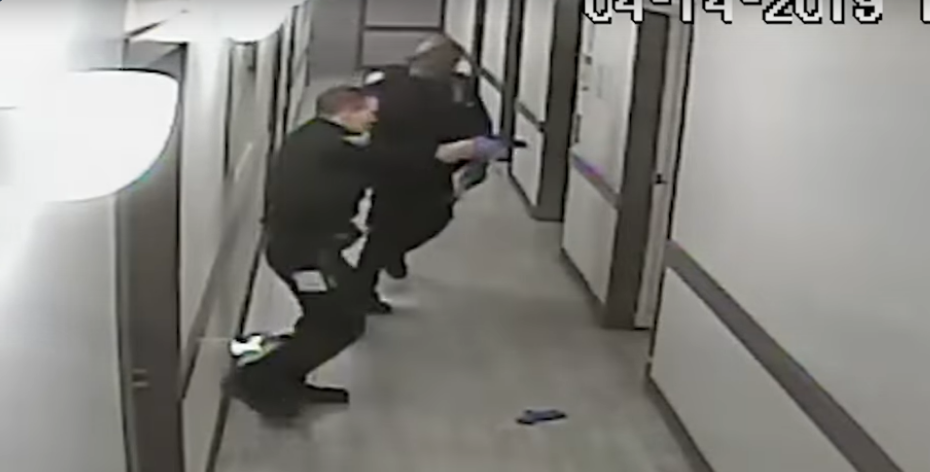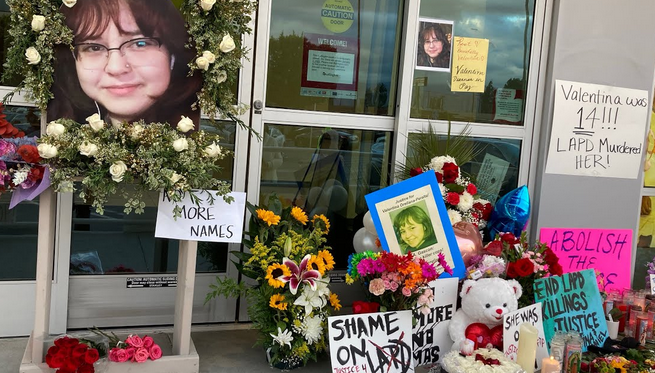Photos: YouTube
Joyce Watkins, 74, (above left) was exonerated in a Nashville courtroom last week. She spent more than 27 years in prison after she and her boyfriend, Charlie Dunn, (above right) were wrongly convicted of aggravated rape and felony murder in the 1987 death of her four-year-old great-niece, Brandi.
“Joyce Watkins and Charlie Dunn are innocent,” District Attorney Glenn Funk told CNN. “We cannot give Ms. Watkins or Mr. Dunn their lost years but we can restore their dignity; we can restore their names. Their innocence demands it.”
In the summer of 1987, Joyce Watkins and Charles Dunn were working full-time jobs, were close to their family and friends, and lived in a nice home in a nice neighborhood, according to a report filed by the Davidson County District Attorney’s Office’s Conviction Review Unit. Ms. Watkins was applying to adopt a child of her own and Mr. Dunn was close to and regularly spent time with his children. Neither had any criminal record.
They drove to Fort Campbell, Kentucky, on June 26 to pick up Ms. Watkins’s great-niece, Brandi, who had spent the previous two months with her other great-aunt, Rose Williams. Ms. Williams had repeatedly and insistently called Ms. Watkins to come take Brandi to her home in Nashville, the CRU found.
When they arrived home, Ms. Watkins noticed blood in Brandi’s underwear and called the girl’s grandmother to tell her Brandi was bleeding and needed medical attention. Brandi’s mother and grandmother told Ms. Watkins not to take her to the hospital but that they would come to get her. When they hadn’t arrived by morning, the CRU report says, Ms. Watkins took Brandi to the emergency room.
By then, the CRU report says, Brandi was unconscious and bleeding more heavily. She was intubated and transferred to Vanderbilt, where she died the following morning. The cause of death was determined to be head trauma.
Ms. Watkins and Mr. Dunn cooperated with the investigation and allowed police to retrieve the child’s clothes and bedding from their home. Police interviewed Ms. Watkins several times without informing her of her rights and without an attorney present, the CRU found.
Dr. Mona Gretel Harlan, the assistant county medical examiner who performed the autopsy with her husband, Dr. Charles Harlan, initially said Brandi’s injuries occurred within 24 to 48 hours of her death based on looking at bruises on her body—a method that the CRU said has been discredited.
That period included the time before Ms. Watkins and Mr. Dunn picked Brandi up, and the investigation initially focused on the theory that Brandi’s injuries occurred in Kentucky, the CRU report says.
In fact, during the two months she lived in Fort Campbell with Ms. Williams, Brandi suffered a variety of bruises, scrapes, and marks, lost consciousness at least twice, and exhibited abnormal behaviors like drinking out of a toilet and vomiting spontaneously at the dinner table, according to the CRU report. She had daily episodes of urinary incontinence and her private parts hurt so badly she wouldn’t sit down in the bathtub, but no one sought medical attention for her.
The Kentucky Department of Social Services received a report that Brandi was being physically abused, but the CRU report says a social worker sent to Ms. Williams’s home closed the investigation without speaking with or observing the child after Ms. Williams falsely claimed Brandi had been returned to her mother in Georgia.
Despite this documented ongoing abuse and neglect of Brandi while she was in Ms. Williams’s care, police “failed to engage in even a cursory investigation into any of the multiple other individuals who had direct access to Brandi during the time frame her injuries likely occurred,” the CRU report says. They instead charged Ms. Watkins and Mr. Dunn with aggravated rape and felony murder.
At trial in 1988, the “most damning proof” presented to the jury was Dr. Harlan’s opinion regarding the timing of the injuries, which she changed just 20 minutes before trial started. She testified that the injuries occurred less than 12-14 hours before death, when Brandi was in the care of Ms. Watkins and Mr. Dunn. “To accept her testimony meant a guilty verdict must be rendered,” the CRU found.
In what the CRU calls “emotionally charged, flatly incorrect summations of the evidence,” the State shored up its purely circumstantial case with false claims that painted Ms. Watkins and Mr. Dunn as monsters, including falsely telling the jury that attempted anal rape had occurred and that Mr. Dunn had caused scratches on Brandi’s back while raping her, the CRU report says. The State also told the jury that Ms. Watkins had washed a bedsheet to destroy evidence of the rape.
Ms. Watkins and Mr. Dunn were convicted and sentenced to life in prison. After more than 27 years in prison, Ms. Watkins was released on parole in 2015.
She asked the Tennessee Innocence Project to clear her name, CNN reports, and they brought in the Conviction Review Unit, which conducted an extensive investigation and filed a 44-page report in November detailing its findings that Ms. Watkins and Mr. Dunn “were convicted of crimes they did not commit.”
The Davidson County Criminal Court found that Ms. Watkins and Mr. Dunn were actually innocent and vacated their convictions in an order issued on January 6.
The court found that new medical evidence proves that Dr. Harlan’s testimony was inaccurate and relied on illegitimate, discredited methods. “Specifically,” the court wrote, “Dr. Lewis [the state’s current chief medical examiner] testified that Dr. Gretel Harlan’s methodology for dating the head injury based upon a lack of histiocytic response in the brain tissue is not a legitimate method for dating pediatric head trauma.”
In addition to the “debunked histiocytic response methodology,” the court found, Dr. Harlan’s reliance on visual inspection of bruising to opine on the timing of the injuries in this case has been disavowed by the medical community.
The new evidence further showed that a more reliable indicator of timing of the injuries in this case is found in the perineal injury, where macrophages were found during the autopsy. Because those cells would not be expected to appear until several days or even more than a week following an injury, they show Brandi’s injuries occurred well before Ms. Watkins and Mr. Dunn picked her up, the court found—leaving “no compelling scientific evidence that Ms. Watkins or Mr. Dunn committed the crimes for which they were convicted.”
“The evidence presented at trial and post-conviction in this case was misleading, false, and uncorrected as to material issues,” the court continued. Specifically, the court found that the prosecutor not only falsely told the jury that Ms. Watkins washed a bedsheet to destroy evidence, but illegally withheld a Tennessee Department of Human Services report showing the sheet was not washed and was in Ms. Watkins’s home, available for collection.
The court announced its ruling on January 12, but the exoneration came too late for Mr. Dunn, who was granted parole but died suddenly in jail in 2015 while awaiting release.
“I wish my daddy was here to witness this day,” Mr. Dunn’s daughter, Jackie Dunn, told WTVF at last week’s hearing. “He knew he was innocent, he knew he did not commit those crimes.”
Ms. Watson’s lawyer told CNN it was unclear whether she or Mr. Dunn’s family would be compensated for the decades they spent wrongfully incarcerated.
“I thank all the people for their prayers and helping me get out of this mess which has cost me half of my life for nothing,” Ms. Watson told reporters. “But I’ll get over it.”












